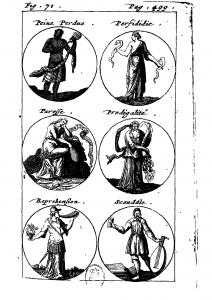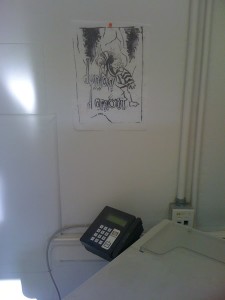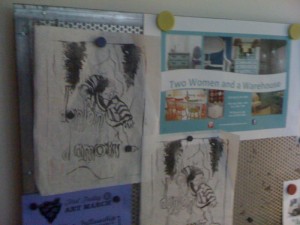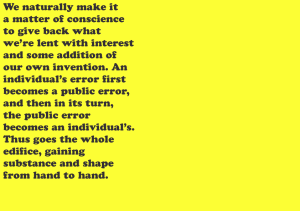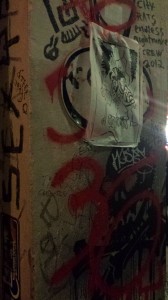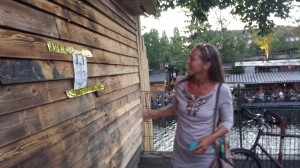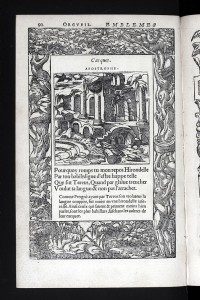The Oxford English Dictionary gives the earliest usage of the term ‘Chinese Whispers’ in 1964, before which it was known as ‘Russian Gossip’, or ‘Russian Scandal’. In Chinese the name of the game translates as ‘passing along rumours or gossip’. Proposals for a culturally sensitive name include ‘broken telephone’ or ‘the grapevine’. In the US the game is known as ‘party line’ or simply ‘telephone’.
There’s an interesting trajectory of artists using text, translation, games, rules and instructions for generating material, works and projects, part of the post-conceptual turn in fine art in which the description of the work (or the instructions for it) are themselves the art. Looking specifically at translation in this context, a remarkable feature seems to be the borrowing of earlier artists’ works – so that the processes of translation are not only linguistic.
For example, Jonathan Monk’s ‘Translation Piece’ (2002) cites Robert Barry’s 1969 work ‘Telepathic piece’. Barry’s work, which consisted of a written statement that he would telepathically transmit the piece, was made for a gallery show in Canada in 1969. Interviewed in 2003(1) he describes the work as a sense or a feeling, and considers that it might still be operating – being passed from person to person telepathically 30 years later – though perhaps no longer recognisable considering the possible multiple changes, shifts and alterations that would have taken place as it passed through multiple thought processes. Jonathan Monk’s work takes Barry’s written statement: ‘During the exhibition I will try to communicate telepathically a work of art, the nature of which is a series of thoughts that are not applicable to language or image’ and sends it around the world through a series of translation agencies from English to French, then into Dutch, German, Czech, Polish, Ukrainian, Russian, Kazakh, Mongolian, Chinese, and finally back into English (2). The work is then exhibited as the translated texts, on the translation agencies’ headed paper, framed on the gallery wall. The final resulting text reads: ‘In this image the way of expression of reactions of the soul attempts to come close to a work of art’(3), transforming the meaning of the statement in a way not dissimilar to the automated translation services that I’ve used for this project. (4)
Stephen Prima’s work, ‘Upon the Occasion of Receivership’ (1989) takes Lawrence Weiner’s 1969 work ‘A Translation from One Language to Another’ (which is a text piece simply consisting of the title text) as an instruction – and sent it (Weiner’s text) to Berlitz translation agency to be translated into 61 languages. These are then organised and displayed according to the their pricing band charged by Berlitz.
Following this trajectory, for our live game of interlingual chinese whispers, conducted as part of the ‘Gossip and Nonsense’ symposium at Exeter, I chose texts from Sol Lewitt’s 1969 sentences on conceptual art (1969) (5). The first experiment took sentence 15: ‘Since no form is intrinsically superior to another, the artist may use any form, from an expression of words (written or spoken) to physical reality, equally’. contracting it to ‘ the artist may use any form, from an expression of words to physical reality, equally’ the sentence was passed from English to French to English to French to English to French to English to English to English to English, with the resulting output ‘art can take whatever form it likes, warts are another matter’. The second took sentence 16: ‘If words are used, and they proceed from ideas about art, then they are art and not literature; numbers are not mathematics.’ contracted to ‘If words are used, and they proceed from ideas about art, then they are art and not literature’ this was passed from English to English to English to English to French to English to French to English to french to English, resulting in ‘if words come first of all it’s because of art, not literature’.
I now plan to continue these games, using further sentences from Sol Lewitt, using the resulting texts to create a set of letterpress prints.
(1) Interview with Robert Barry By Raimundas Malasauskas, 3rd March 2003 http://www.janmot.com/newspaper/barry_monk.php
(2)Gray, Z., and Honer, J., 2006, Langues Emmelees/Entangled Tongues, ADDC, Perigueux
(3) Eichler, D. 2006, Jonathan Monk, in Frieze Magazine, 100: June-August 2006 http://www.frieze.com/issue/review/jonathan_monk/
(4) Qualmann, C. 2013, http://gossipandnonsense.exeter.ac.uk/2013/08/chinese-whispers-using-online-translation-services/
(5) Lewitt, S, 1969, Sentences on Conceptual Art, Art-Language: The Journal of Conceptual Art, Vol. 1 # 1, 1969, pp11-13

